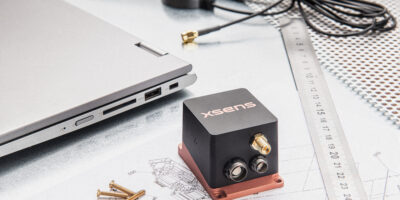IoT modules developed by Miromicro run a compatible Bluetooth Low Energy 5.0 stack to enable wireless connectivity to sensors, devices and systems communicating at high data rates or over a long distance. The FMLR-8x-x-STLx LoRa IoT modules are available from Avnet Silica.
The modules are built on Semtech’s 2.4GHz SX1280 LoRa transceiver and do not require any additional BLE 5.0 devices, advises Avnet Silica. Target IoT applications include track and trace, building automation, construction monitoring, mining, farming, telemetry and remote data logging.
The modules allow multiple wireless protocols to run on the same microcontroller, i.e., LoRa and BLE 5.0. The combination of technologies in the same wireless module enables commissioning, configuration, local data monitoring, or firmware update of IoT devices using smartphones, tablets, car navigation systems, or other iOS or Android-based devices. After the initialisation process, the module operates LoRa 2.4GHz long range applications anywhere in the world. Dual-protocol IoT devices usually require separate Bluetooth Low Energy chipsets to be separately integrated for connection to mobile phones, but after initial setup, these modules do not require additional Bluetooth Low Energy chipsets.
The FMLR-8x-x-STLx module-family is available with options, including extra onboard flash memory to enable over-the-air (OTA) updates and local data buffering in times when cloud connectivity is temporarily unavailable. Using Miro Edge 2.4GHz LoRa gateways, the modules support Semtech’s active-radar-based ranging and localisation technology for both indoor and outdoor environments. Further supported high-bit rate modulation schemes include the robust and bandwidth-efficient FLRC and (G)FSK. Bluetooth Low Energy allows bi-directional communication with smartphones, tablets and other devices, while optional low power, high precision, temperature-compensated oscillators (TCXO) for both RTC and radio are also available.
The module’s firmware, including the wireless stack, can be updated via SWD, UART Bootloader or optional firmware over-the-air (FOTA) to support fast prototyping and development.
Miromico’s FMLR-8x-x-STLx LoRa modules, development kits and dual-band LoRa gateways are available now from Avnet Silica.







